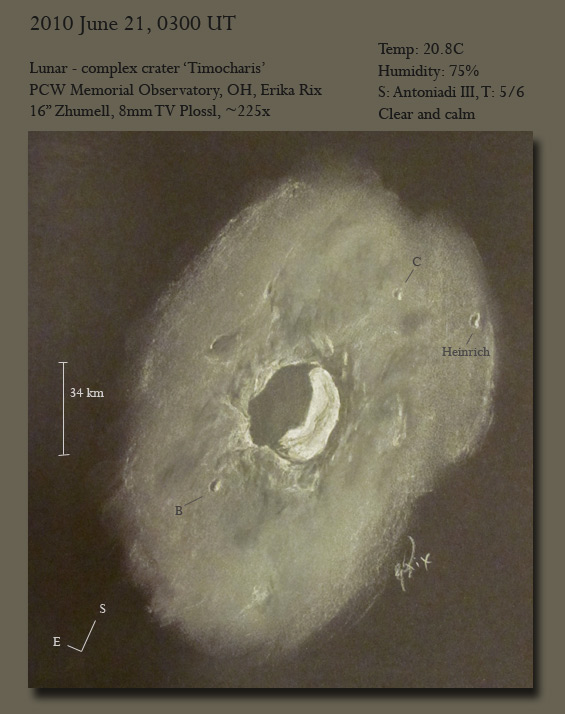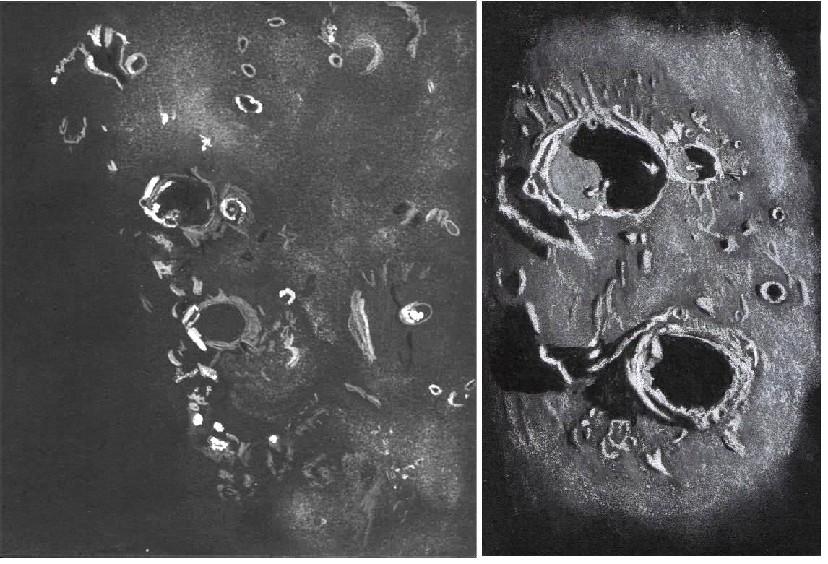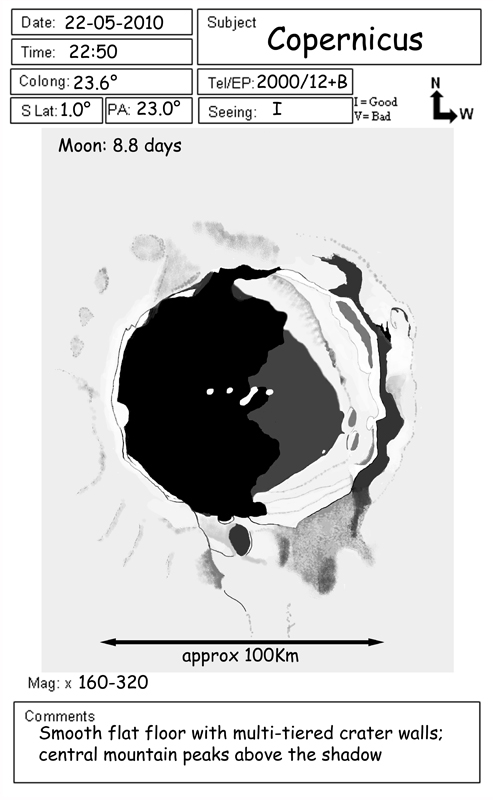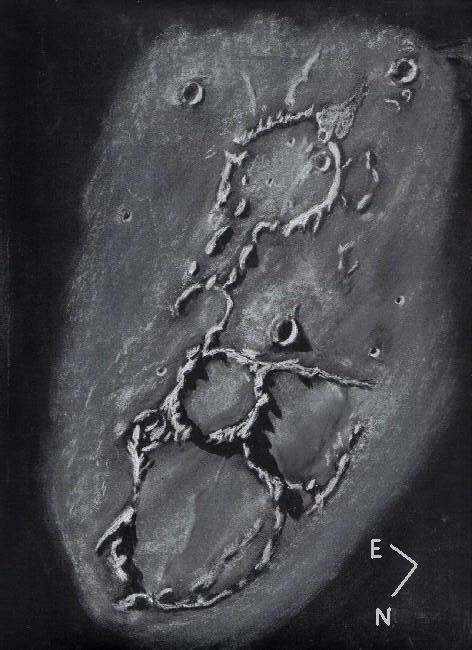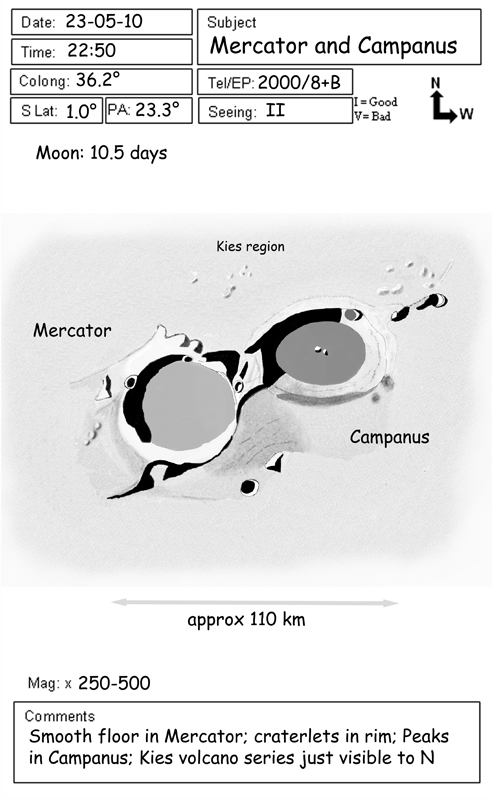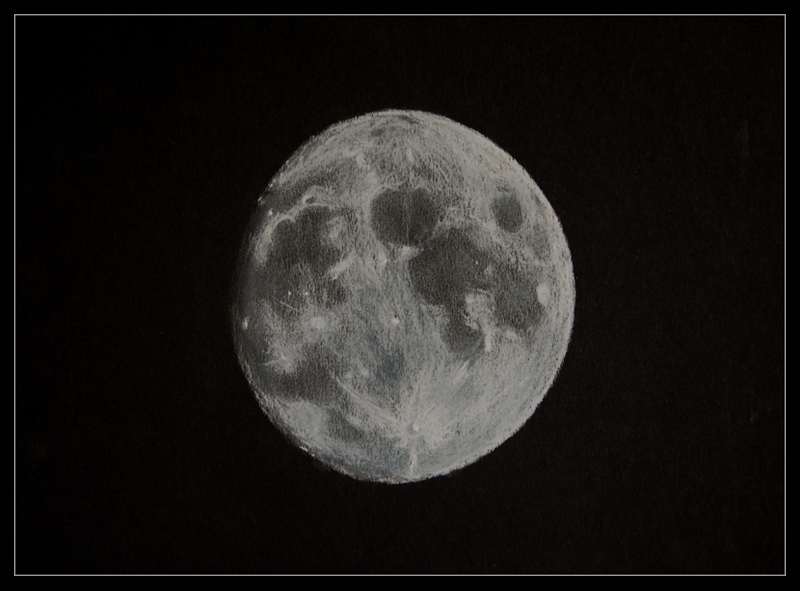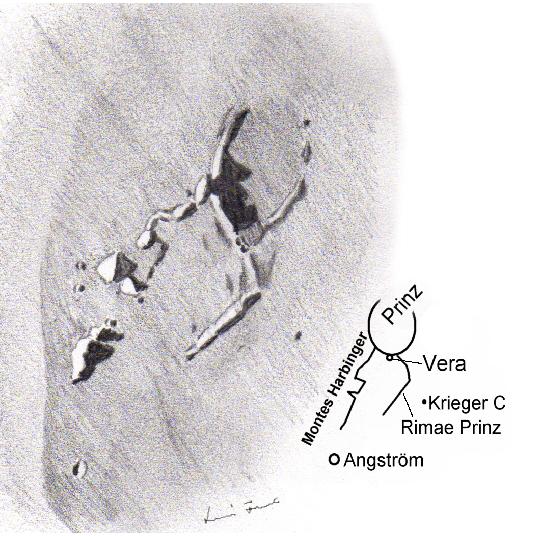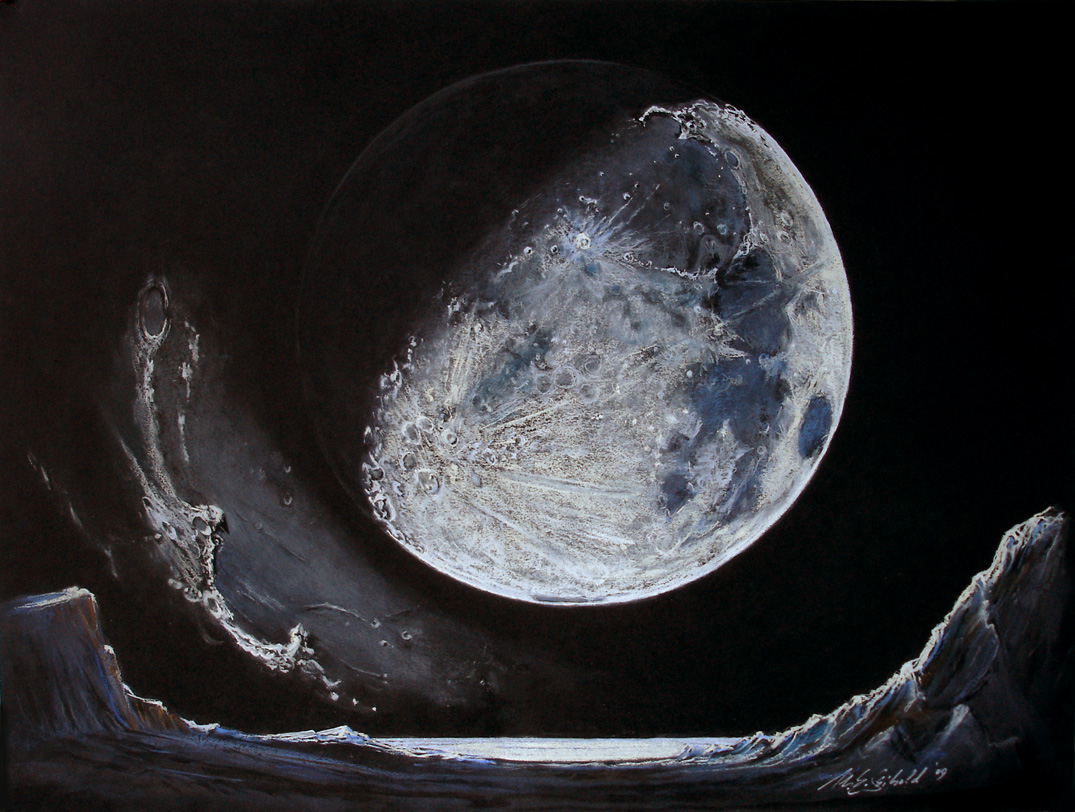2010 06 21, 0300 UT
Timocharis
PCW Memorial Observatory, OH, USA
Erika Rix
Zhumell 16”, 8mm TV Plossl, 225 x
Phase: 64.8
Lunation: 8.66. d
Illumination: 71.3%
Lib. Lat: 7°30’
Lib. Long: 4°47’
Az: 215°14’, Alt: 27°21’
This complex crater has a crushed central relief and the area was
completely enveloped with shadow. I could make out some of the western
terraced walls within the crater. Heinrich (9.5 km), B (5 km) and C (4
km), were very clear as well as a small portion of the wrinkle ridge to
the southeast. Timocharis was formed ~ 3.2 to 1.1 billion years ago
during the Erathosthenian period. Height is estimated to be 3110 meters.
Faint small rays can be spotted with decent seeing conditions.
Sketched scopeside on black Strathmore Artagain paper, charcoal, black
wax pencil, white Conte’ crayon and pencils.
Erika Rix
